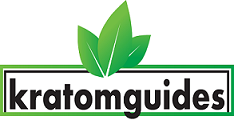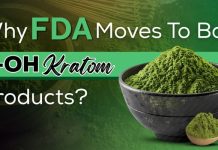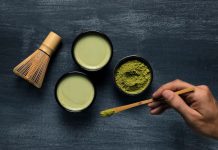Kanna comes from a long line of psychoactive or mood-altering plants with a profound history rooted in culture. It dates back to about 300 years, known as “kougoed.” Native South Africans used it for stress relief and intoxication purposes.
Lately, it has become widely popular to use Kanna in combination with Cannabis in different blunts and joints to prolong the euphoric effect produced. Although to this day, people use Kanna for medical purposes, a majority of the users smoke it for recreational purposes. Here’s a more in-depth look into the world of Kanna.
What is Kanna? History
The Kanna plant originates from South Africa. Its scientific name is Selenium tortuosum, and it’s a succulent that people used to dry and ferment before chewing. Hence, the plant is known as “chewable things” or “something to chew on”.
The history of the plant dates back to South African hunters who, on their adventures, would chew Kanna to relieve their stress and uplift their mood. Kanna also provided them with euphoria and even sexual enhancement in larger amounts.
The plant is collected and dried. Furthermore, fermentation allows for the preservation of the active ingredients present.
Once chewed, the salivary glands would help release these active ingredients to enhance the mood. This process made for a great way of recreation for these hunters who wanted to relax after a grueling hunting session.
What Makes Kanna Effective?
Kanna essentially contains various alkaloids, which help improve mood. These alkaloids act on the serotonin receptors and thus, help improve one’s experience. The main alkaloids present within the plant are mesemberine and mesemberone. These are present within the leaves or stems of the plant.
Mesemberine is a serotonin reuptake inhibitor. It means more serotonin is present within
the synaptic cleft due to this inhibitory effect, which causes the “Mood-lifting” effect.
Studies link this reuptake inhibition with the potential anti-anxiety property of the plant.
Why and How People Use Kanna?
Uses of Kanna:
· To promote relaxation
· To improve sleep
· To subside moderate amounts of pain
· To increase sexual arousal
· To reduce the feeling of hunger
· To achieve tranquility
· To reduce anxiety
How Kanna is Used?
There are many ways Kanna has been used throughout history. The most common methods have been:
Chewing
This is the oldest and known method of taking Kanna. Since its discovery, the South African natives have chewed different plant parts, like leaves or stems. After chewing, only the user spat out the plant material while the person swallowed the residual salivary matter for the effects. Lately, to enhance this process, commercial markets have introduced gums infused with Kanna that people can buy instead.
Snorting
Another commonly known way of taking Kanna in the olden times has been through Insufflation. It provides a rather quick action, and usually, for the insufflation process, people use the powdered plant. Although users must take care since dosing this way can be much more powerful.
Sublingual
Since many blood vessels are present underneath the tongue, there is rapid absorption from the site. So, people have made it that they place the plant matter under the tongue for a while. It allows any “Juices” or salivary mix to be absorbed and taken directly to the bloodstream.
Can You Smoke Kanna?
Smoking Kanna isn’t entirely a new concept. Kanna is now also used in Vapes. So, to answer it directly. Yes, you can smoke, Kanna. Most sources state that it’s best to start with about 50 mg of Kanna as smoking is very effective, and the results are just as quick as snorting it.
It takes about an hour or half to reach a “high” or a “buzz”, and the effects gradually dwindle after some hours.
During this, a person can feel euphoric and content, and if they smoke a higher concentration of the plant, they can also feel sedated. A person can use dried-up leaves in a joint or blunt for smoking Kanna.
What Are Some Smoking Mixtures for Kanna?
Kanna can be smoked alone or in smoking mixtures or combinations with cannabis.
There is some history related to this as the Khoisan people (The first inhabitants of South Africa) believed that using Kanna as a mild psychoactive agent was somewhat spiritual. Likewise, the use of cannabis is also linked with tranquility and spirituality by users or spiritual believers. So, the combined use of Kanna and weed these days is no coincidence.
Lately, people have used Kanna and Weed in combination in hopes that Kanna might combat the negative effects that smoking weed sometimes produces while simultaneously enhancing mood and giving people a joyous and light feeling.
What Are the Side Effects of Smoking Kanna?
Like everything else that a person can smoke, there is also a danger associated with smoking Kanna chronically or long-term. However, there is no actual scientific study for the side effects. Certain situations should be avoided by a user when using Kanna.
Firstly, pregnant women or new mothers should avoid smoking Kanna. Likewise, if you’re using different drugs or substances, such as antidepressants or MAO’s, Kanna should be avoided. As Kanna is an SSRI, it will most likely lead to great sedative effects that can cause a person not to act or perform well and lead to other dangerous health situations.
Some common side effects found with its use include:
· Headaches and lightheadedness
· Intoxication
· Appetite loss
· Listlessness
What Dose of Kanna Should Be Used?
It is important to be careful when using any herbal or remedial product. So, to aid users here is some information regarding the amount of Kanna that a person should use to have a good experience.
• Snorting Kanna: 50 – 150 mg
• Smoking Kanna: 100 – 250 mg
• Sublingual use: 200 – 400 mg
• Chewing: 200 – 400 mg
• Kanna tea: 200 – 500 mg
What is the Legality Status of Kanna?
Throughout the United States, it is legal to produce, harvest, and sell Kanna. The law was approved Federally, although there are states where the plant or its products are regulated or illegal.
In South Africa, the Kanna plant is sold as a medicine regularly. While, in places like Canada, the plant is uncontrolled.
Where Can You Buy Kanna?
The easiest way to obtain Kanna would be locally, but you can also find different smoking mixtures, tinctures, or other products containing the plant online.
Many online vendors specialize in medicinal herbs only, and you can easily find many reputable sites. Likewise, you can discover Kenna or Kenna infused/enriched products such as capsules, powders, or multivitamins on Amazon, eBay, or other famous places.
Here are a few products that you might want to check out:
- Kanna 100:1 Capsules by Nine Mile Botanicals.
- Zembrin 25mg, 60 Capsules – Vegetarian Capsules, Non-GMO, Gluten Free by Nutricost.
- Kanna Sceletium tortuosum Organic Leaf Powder 0.5 oz by the NARASI STORE.
Final Thoughts
As the rise in recreational use of medicinal herbs increases daily, one must think if these are a better option than most modern medications. Do the answers truly lie in nature, or are we simply poisoning ourselves with something raw and unfiltered? Although most herbs have a historical impact, it is amusing to see the modern influence. However, there is no doubt that one should be careful regardless of dealing with any substance that is proven to affect the mind.








